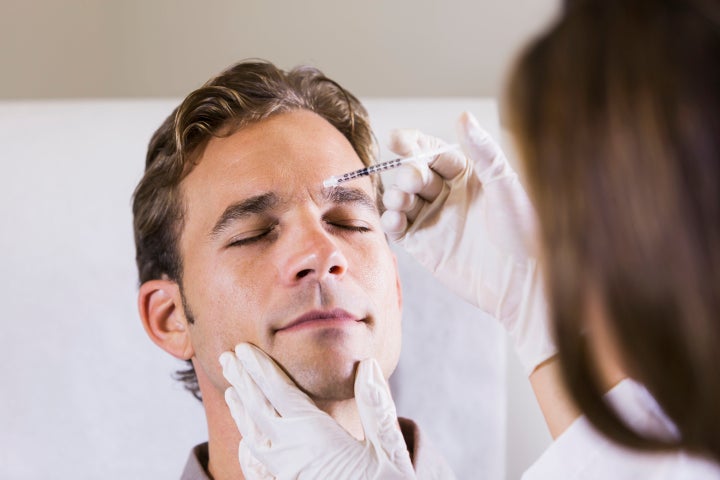Botulinum toxin is the most popular minimally invasive cosmetic treatment in the United States. Last year, people received more than seven million botulinum toxin type A injections, up 2 percent from 2016, according to the American Society of Plastic Surgeons.
Judging by the numbers, a lot of people really love Botox. And why not? It can reduce the look of fine lines and wrinkles by essentially paralyzing muscles and preventing them from contracting.
(For the purpose of this article, we’re using “Botox” to refer to botulinum toxin in general, although it is in fact one of many brand names. Others include Dysport and Xeomin.)
But what if you don’t like the effects of Botox? It’s not like hyaluronic fillers, another cosmetic treatment that can be dissolved fairly easily ― just ask Kylie Jenner, who recently revealed she had her lip filler dissolved after some years of plumping her pout.
Botox works differently. We spoke to two plastic surgeons for some insight.
First, here’s a quick refresher on what Botox actually does.
Botox “is a compound that actually blocks receptors between a nerve and muscle –- and once the receptor is blocked, it does not work anymore until a new one is made by the body,” Dr. Stafford Broumand, of 740 Park Plastic Surgery in New York, told HuffPost.
The effects of Botox take about four to five days to fully kick in, Broumand said, which means you won’t see a difference the minute you leave the doctor’s office.
What happens if you aren’t happy with the way Botox changes your facial expressions?
Regretting a “frozen face” is one thing (we’ll get to that later). But what happens if the particular look of your face just isn’t what you expected?
The answer depends on what you’re actually unhappy with. Dr. Michelle Yagoda, a facial plastic surgeon based in New York, said that in her experience, patients who aren’t completely satisfied with the results of a Botox treatment are usually concerned with lack of symmetry or the expressions they find themselves making.
Sometimes, people are left with awkward movement in the face due to “under-correction,” according to Yagoda.
“You’ll see people with the telltale signs of Botox where the center part of their forehead ― where the even lines are ― is nice and smooth, but over the eyebrows, towards the sides of the forehead, there’s movement going up and down,” the doctor said.
A “teeny tiny bit” more Botox, she said, can be injected to prevent movement in areas where it’s not wanted.

In terms of asymmetry ― or, as Yagoda put it, if “everything looks relaxed for the most part but one eyebrow is up in the air” — you can even things out, again, with a little more Botox.
“Most people think they’ve had too much Botox when in fact they’ve had too little in a given area,” she said.
Broumand emphasized that treating someone with Botox must be done artfully; it’s not simply a matter of “injecting product.”
“You want to make sure that you treat the problematic areas and that you avoid the areas that are sensitive and where Botox is not needed,” he said. “It is important not to blast areas with Botox because then the result may appear unnatural. I prefer spritzes of Botox to specific areas that need it.”
Both Yagoda and Broumand said they have their patients come back for follow-up appointments once the product has kicked in so they can assess the result and make any needed adjustments.
But what if you hate everything about the frozen feeling of Botox?
Botox can’t be removed or dissolved, Broumand said.
“There is not a way to undo [its effects], but rather we have to wait for the body to create new receptors when the Botox wears off,” he explained.
Just as the treatment gradually kicks in, the effects of Botox gradually fade. It can take anywhere from three to five months, according to Yagoda. But eventually, the muscle activity comes back.
If someone experiences a complication from Botox, such as eyebrow drooping, Yagoda said, “There are things that can be done to improve the appearance of that and get them through the time it takes for the Botox to wear off.”
In her experience, the doctor said, “very few people” are unhappy because they’ve received too much Botox.
“That’s a small percentage who’ve been over-injected and feel like they don’t have any expression,” she acknowledged. “Or a very small percentage of people who just don’t like the shape that their eye may change into, depending on their anatomy. ... Then you have to wait.”
In any case, always consult with a certified professional.
Whether you’re thinking of getting Botox, undergoing a different invasive cosmetic procedure or concerned with the results of something you’ve already had done, you should always talk to a certified plastic surgeon who can help you figure out the best course of action.
